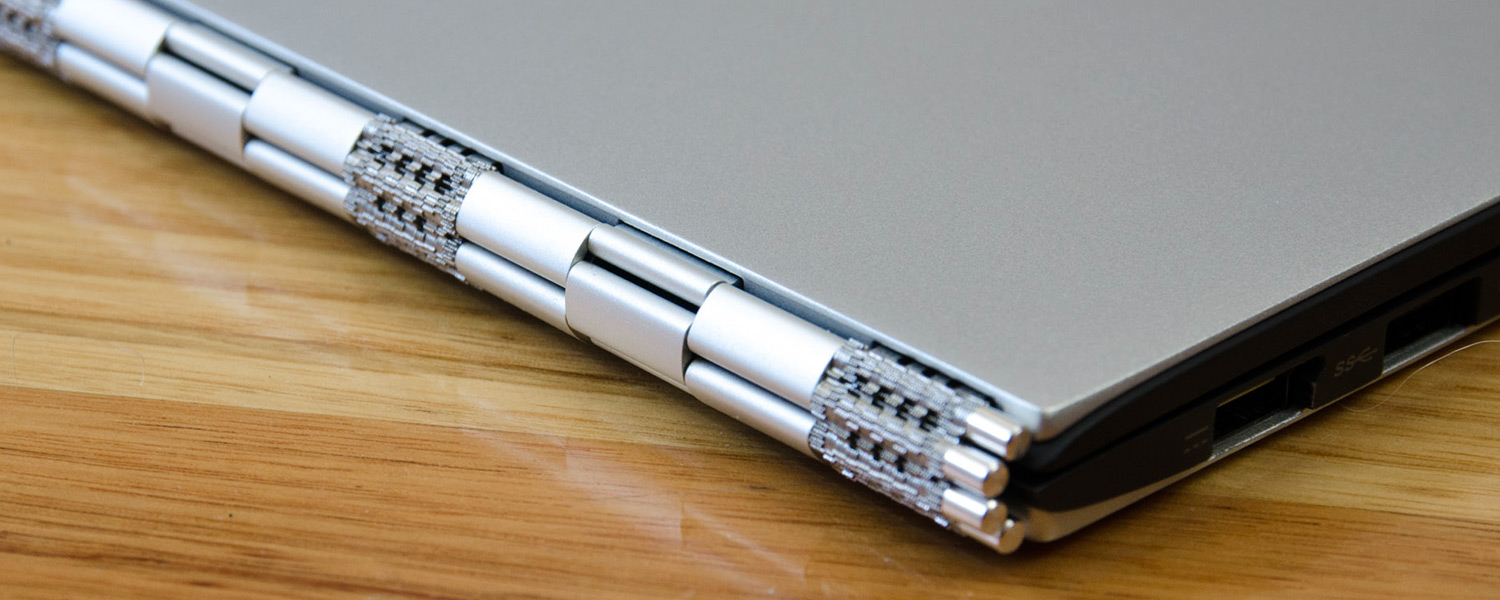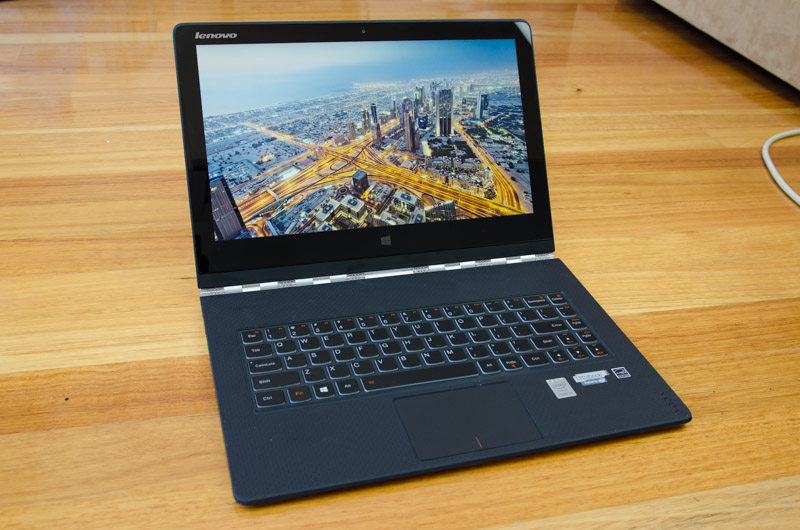Display: 13.3-inches of QHD+
The Lenovo Yoga 3 Pro comes with a 13.3-inch QHD+ (3200 x 1800) TFT IPS LCD display with 10-point multi-touch support. At this size and resolution, the laptop features a pixel density of 276 PPI, which is higher than the popular 13-inch MacBook Pro with Retina display. The resolution is also exactly four times 1600 x 900, which allows the display to scale nicely (in theory).
The color quality of the display is excellent, and exactly what I'd expect from a laptop of this class. Vibrant photos are well saturated yet balanced on this panel, and look especially excellent when they're high resolution. White levels are around the ideal mark with little tinting to either end of the spectrum, while black levels are reasonably good, exhibiting a small amount of backlight bleed in the bottom right corner on my review unit.
The nature of the IPS technology used in the Yoga 3 Pro's display means that viewing angles are excellent. If you've got the laptop set up on a table in stand mode to watch a video with some mates, all of them will be able to see the content. The viewing angles are enhanced by a nearly non-existent gap between the display and Gorilla Glass, which also makes content feel like it's at your fingertips when you're using the touchscreen.
The maximum brightness level of the Yoga 3 Pro's display is perfect for most use cases indoors and even outside, reaching at least 300 nits despite the display's high resolution. Of course the maximum brightness level will be the most power consuming, but you can enable automatic brightness that's fast, always active and effective. The way auto brightness adjusts the backlight in steps can be somewhat distracting, though it's better than having to always manually adjust.
The Gorilla Glass used to protect the display is glossy and reflective, meaning if there's a strong backlight your display visibility will be reduced. It's not as bad as I've seen from other displays though, and cranking up the brightness will combat reflections. At the other end of the spectrum, the minimum brightness level is comfortable for use at night.
But it's the resolution that will probably catch most people's eye. If you have the right sort of content the Yoga 3 Pro's display is extremely crisp, making it hard to distinguish individual pixels in both standard laptop and tablet usage. Photos and Ultra HD video look especially excellent on this display, as you can pretty much guarantee that this type of content will be displayed natively.
Unfortunately Windows display scaling is still pretty abysmal for high resolution panels. At 100% scaling (native resolution) everything on the display is way too small to use, but everything is scaled correctly. At a comfortable 200%, which effectively simulates a 1600 x 900 panel with a better pixel density, you occasionally get an application that scales correctly, but you also often have to deal with apps that have blurry text and visuals, or layouts that are strange or unusable due to scaling issues.
Even when apps do scale correctly, the way Windows renders text looks somewhat odd compared to a display that's rendering natively. Sure, text is crisp and jaggie-free, but it almost appears bold in many conditions, especially in desktop applications. This is something that Microsoft needs to put a lot of effort in to correcting and improving in Windows 10, or the advantages of a high density display will be lost.




